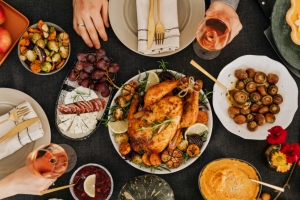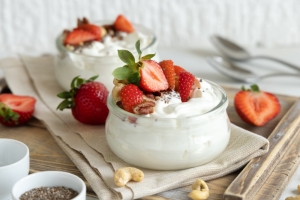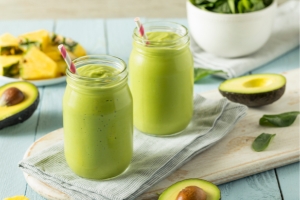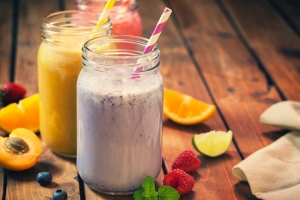Hey there! If you’re managing diabetes, like I am, you know the daily dance: keeping those blood sugar levels in check. And carbohydrates? They’re often the most challenging part of that dance. We’re all familiar with the usual suspects – white bread, pasta, those sugary sodas. But the sneaky high-carb foods, the ones hiding in plain sight? Those can be the real game-changers (in a not-so-good way!).
I’ve definitely had my share of surprises. I once thought a massive fruit smoothie was a health boost, only to see my blood sugar go through the roof! It’s a continuous learning experience, and that’s why I’m sharing some of the unexpected high-carb foods I’ve encountered, along with some tasty and diabetes-friendly alternatives.
Why Do Certain Foods Spike Blood Sugar?
It’s all about how quickly your body breaks down carbohydrates into glucose. Foods high in refined sugars and starches, and low in fiber, are digested rapidly, causing a rapid increase in blood sugar. Fiber, on the other hand, slows down the absorption of glucose, leading to a more gradual rise. Think of fiber as the “brake pedal” for your blood sugar.
The Sneaky Suspects (and Why They’re Sneaky)
Let’s break down these carb culprits into categories:
Breakfast Traps

- Fruit Juice: Why? It delivers a concentrated dose of sugar without the beneficial fiber found in whole fruit. Imagine eating four oranges at once – that’s the sugar load you might be getting! (1 cup orange juice ≈ 26g carbs)
- Instant Oatmeal: Why? Those convenient packets are often loaded with added sugars and flavorings to make them taste better. (1 packet flavored instant oatmeal ≈ 28g carbs)
- Flavored Yogurt: Why? While yogurt can be healthy, the fruit-on-the-bottom or flavored kinds often contain surprisingly high amounts of added sugar. (1 container flavored yogurt ≈ 20-30g carbs)
- Granola Bars: Why? Granola Bars, although marketed as healthy, contain a lot of added sugars. (1 granola bar ≈ 24g of Carbs)
Snack Saboteurs

- Dried Fruit: Why? The dehydration process concentrates the fruit’s natural sugars, making even a small handful a carb powerhouse. (1/4 cup raisins ≈ 33g carbs)
- Protein Bars: Why? Many protein bars are essentially candy bars in disguise, packed with sugar and refined carbs to improve taste and texture. Always check the label! (1 protein bar ≈ 20-30g carbs)
- Smoothies: Why? That giant, seemingly healthy smoothie, packed with fruit and maybe even yogurt, can quickly become a carb overload. (1 large smoothie ≈ 40-80g carbs, depending on ingredients)
Condiment Culprits & Side Dish Deceptions

- Store-Bought Salad Dressings: Why? Many creamy dressings, like ranch or honey mustard, are surprisingly high in sugar and added carbs. (2 tbsp ranch dressing ≈ 2-5g carbs)
- Barbecue Sauce: Why? This cookout favorite is often loaded with sugar, sometimes even more than ketchup! It’s usually the added molasses or brown sugar. (2 tbsp BBQ sauce ≈ 10-15g carbs)
- Ketchup: Why? Even this classic condiment can add up in carbs, especially if you’re a heavy user. (1 tbsp ketchup ≈ 4g carbs)
- Baked Beans: Why? While beans themselves are a good source of fiber, many canned baked beans contain added molasses, brown sugar, or syrup, significantly increasing the carb count. (1/2 cup baked beans ≈ 25-30g carbs)
- Coleslaw: Why? It’s not the mayonnaise itself, but the often-sugary dressing that coats the cabbage and carrots that contributes most of the carbs. (1/2 cup coleslaw ≈ 15g carbs)
Beverage Beware

- Sweetened Non-Dairy Milk: Why? Even seemingly healthy alternatives like almond or soy milk can have added sugars. Always opt for the unsweetened versions. (1 cup sweetened almond milk ≈ 15-20g carbs)
Delicious Swaps & Smart Choices:

The good news? There are tons of delicious, low-carb alternatives to keep you satisfied and your blood sugar stable. Here’s how to make some smart swaps:
- Swap Fruit Juice → Whole fruit (fiber slows sugar absorption!) or infused water (lemon, cucumber, berries).
- Swap Instant Oatmeal → Old-fashioned rolled oats or steel-cut oats (cook your own and control the ingredients!).
- Swap Flavored Yogurt → Plain Greek yogurt + fresh fruit + cinnamon/stevia.
- Swap Dried Fruit → Fresh berries (lower in carbs, high in antioxidants!).
- Swap Store-Bought Salad Dressings → Homemade vinaigrette (olive oil + vinegar + herbs). Try this 5-minute lemon vinaigrette recipe.
- Swap Barbecue Sauce → Sugar-free BBQ sauce or homemade versions. Try this sugar-free BBQ sauce recipe.
- Swap Ketchup → Use mustard, or use reduced-sugar Ketchup in moderation.
- Swap Baked Beans → Cook dry beans with your own, sugar-free sauce.
- Swap Coleslaw → Create a vinegar based slaw without added sugars.
- Swap Sweetened Non-Dairy Milk → Choose the unsweetened option.
- Swap Protein Bars → A hard-boiled egg.
- Swap Smoothies → Eat the fruit and the yogurt separately, opting for plain Greek Yogurt.
- Swap Granola Bar → Create a trail mix of unsalted nuts.
Sample Daily Meal Ideas
Here are a couple of sample meal plans using these swaps
Day 1:
- Breakfast: Plain Greek yogurt with berries and a sprinkle of chopped almonds.
- Lunch: Large salad with grilled chicken or fish, dressed with a homemade vinaigrette.
- Dinner: Baked salmon with roasted vegetables (broccoli, cauliflower, zucchini).
- Snack: A small handful of walnuts.
Day 2:
- Breakfast: Scrambled eggs with spinach and a side of whole-wheat toast (one slice).
- Lunch: Leftover baked salmon and roasted vegetables.
- Dinner: Chicken stir-fry with lots of non-starchy vegetables and a small portion of brown rice.
- Snack: Celery sticks with a tablespoon of natural peanut butter.
Frequently Asked Questions (FAQ)

Q: Can I ever eat dried fruit?
A: Yes! But in very small portions, and ideally paired with a source of protein and healthy fat, like nuts, to slow down the sugar absorption.
Q: Are all fruits bad for diabetes?
A: Absolutely not! Whole fruits are packed with nutrients and fiber. Focus on lower-sugar options like berries, and be mindful of portion sizes.
Q: What’s the best way to check ingredient labels?
A: Look for “added sugars” under the “Total Carbohydrate” section. Also, check the ingredient list – sugars can hide under many names (corn syrup, sucrose, dextrose, etc.).
Q: How many carbs should I be aiming for?
A: That is between you and your doctor. However, many people do well with between 100 and 150 grams a day.
The Bottom Line
Managing diabetes is a personal journey. It’s about making informed food choices and finding healthy alternatives that you truly enjoy. Being aware of these sneaky high-carb foods is a big step toward keeping your blood sugar levels happy and feeling your best. You’ve got this! And remember, I’m right here with you on this journey.
Reference:
- Glycemic Index and Glycemic Load for foods: a systematic review
- Effect of a low-carbohydrate, ketogenic diet on glycemic control, body weight, and cardiovascular risk factors in patients with type 2 diabetes
- Dietary fiber for the treatment of type 2 diabetes mellitus: a systematic review and meta-analysis of randomized controlled trials
- Impact of sugar-sweetened beverages on the development of type 2 diabetes: A meta-analysis
- Effect of a low-carbohydrate diet on appetite, blood glucose levels, and insulin resistance in obese patients with type 2 diabetes
- Dietary carbohydrates: role of quality and quantity in chronic disease
- Added Sugars and Cardiovascular Diseases Risk in Children: A Scientific Statement From the American Heart Association
- The effect of fruit on glycemic control in type 2 diabetes mellitus: A systematic review and meta-analysis of randomized controlled trials
- Effects of Dietary Composition on Energy Expenditure During Weight-Loss Maintenance
- Sugar-Sweetened Beverage Consumption and Incident Hypertension: A Systematic Review and Meta-Analysis of Prospective Cohorts
- A Randomized Trial Comparing a Very Low Carbohydrate Diet and a Calorie-Restricted Low Fat Diet on Body Weight and Cardiovascular Risk Factors in Healthy Women
- Short-term effects of a low carbohydrate diet on glycaemic variables and cardiovascular risk markers in patients with type 2 diabetes: A systematic review and meta-analysis








One Response